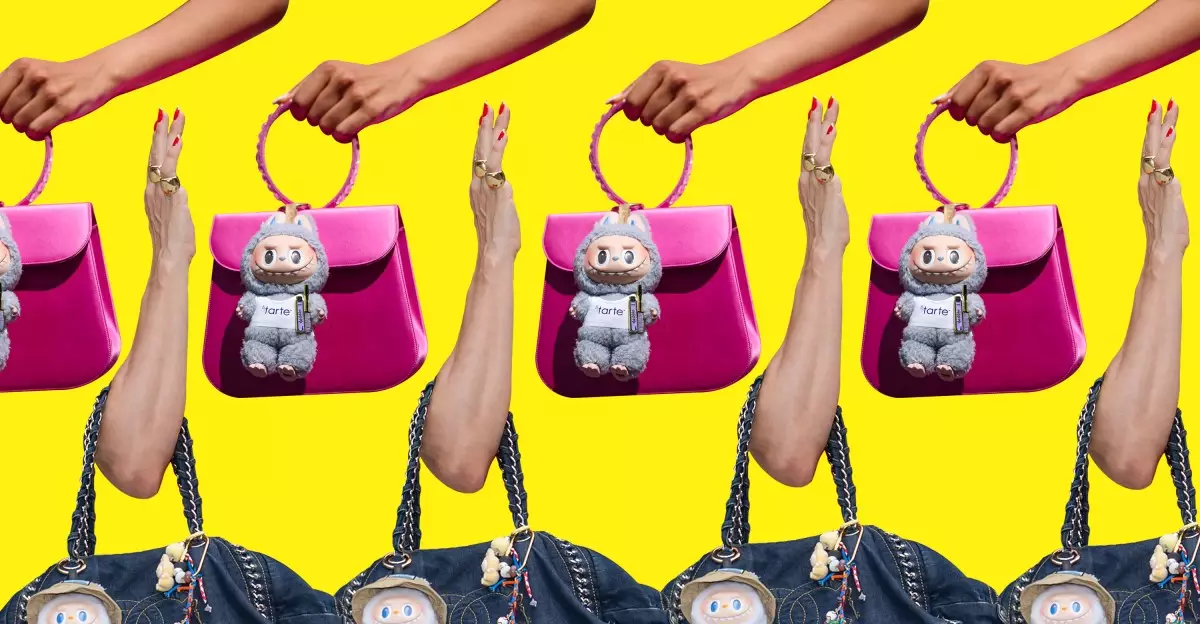The phenomenon surrounding Labubu toys exemplifies a fascinating shift in consumer culture—what once was about simple possession has transformed into an intense game of strategy and luck. These little figurines, produced by the Chinese company Pop Mart, have become more than just small collectibles; they embody a digital-age pursuit that combines elements of gaming, gambling, and social validation. The thrill isn’t merely in owning the toy but in the complex journey required to secure one, turning an ordinary purchase into an arduous, almost ritualistic experience. This craving for the chase reshapes how we perceive value, achievement, and the nature of consumer satisfaction.
In many ways, the process of acquiring a Labubu mirrors high-stakes gambling. Limited stock, random distribution, and the need to navigate a cryptic app interface create an environment where patience and persistence are rewarded, but only after considerable frustration. As enthusiasts tirelessly refresh pages, execute hacks, and watch countless TikTok live streams, the act of buying a Labubu evolves into an adrenaline-fueled badge of honor. This ritualistic endeavor amplifies the toy’s desirability, fostering a sense of accomplishment when finally holding the figurine. Yet, this pursuit also exposes a dark side—one that hints at the addictive qualities of chance-based systems embedded within modern collectibles.
Decoding the Digital Labyrinth
Pop Mart’s online sales method has intentionally complicated the purchase process, transforming what could be a simple transaction into a virtual scavenger hunt. The site simulates a limited in-store experience, with a rotating stockout and replenishment cycle that mimics Black Friday chaos. Fans are compelled to spend hours monitoring display cases, timing their clicks perfectly, and often resort to unorthodox tactics like toggling Wi-Fi or harnessing bots to increase their odds. The app itself functions like a mini game, demanding attention and quick reflexes, which further heightens the sense of achievement upon success.
This convoluted distribution model feeds the hype and intensifies the community’s obsession. Influencers and collectors dedicate hours to crafting tips, hacks, and tutorials, creating a self-perpetuating cycle of anticipation and frustration. Some enthusiasts even dedicate entire live streams to waiting for the next drop or revealing their unboxings, turning the act of buying into an event itself. For many, just securing a Labubu becomes a badge of perseverance—a status symbol within the community, transcending the toy’s simple aesthetic appeal. It’s evident that the real currency in this culture isn’t just the figurine but the effort, the gamble, and the shared experience of struggle.
The Deeper Meaning Behind the Obsession
The devotion to Labubu reveals a broader commentary on contemporary consumer behavior. The allure of blind boxes feeds into a desire for surprise, ownership of the rare, and social validation through collection. The intrigue isn’t solely about the toy but about what it signifies: your dedication, your patience, and your ability to outsmart the system. For serious collectors, the thrill is as much about the process as it is about the object itself. The gamble encapsulated by the one-in-72 chance of finding a rare color turns the routine act of purchase into a form of escapism that resonates with universal themes of luck and risk.
This obsession bears a resemblance, arguably more sinister, to gambling addiction. The dopamine hits from discovering a sought-after color or finally completing a set reinforce compulsive behaviors. The community forums, TikTok unboxing videos, and resale marketplaces highlight a marketplace driven not only by genuine fandom but also by profit motives and status symbols. While flipping Labubu dolls may not be lucrative in the long run due to low margins and saturated markets, the allure remains potent. The real “value” lies in the emotional and social capital garnered through the hunt.
Why the Labubu Craze Will Persist (For Now)
Despite the ongoing frustrations, it’s unlikely that the hype surrounding Labubu will diminish soon. The combination of rarity, community engagement, and the absurdly intricate purchasing process sustains their desirability. Viral videos of unboxings, successful hacks, and collectibles trading keep the momentum alive, feeding into a cycle of obsession and anticipation. As long as the thrill of the unexpected remains embedded in the experience, the craze will endure.
What makes Labubu’s popularity truly intriguing is how it exposes a wider cultural shift—our collective willingness to chase elusive rewards in the face of inconvenience. Whether these toys will ultimately be valued for their artistic or sentimental worth versus their status as tokens of perseverance remains to be seen. Yet, what’s clear is that the act of hunting, rather than the object itself, has become central to their appeal. When the draining ordeal of acquiring a Labubu becomes just another digital chore, perhaps the magic will fade; until then, the chase continues, fueled by the exhilarating possibility of victory amid chaos.


Leave a Reply